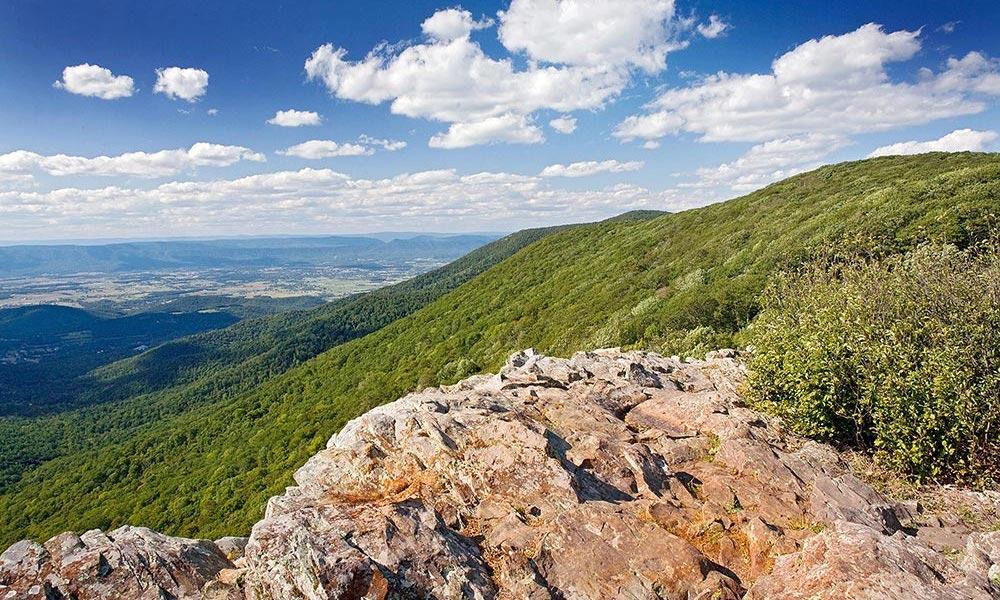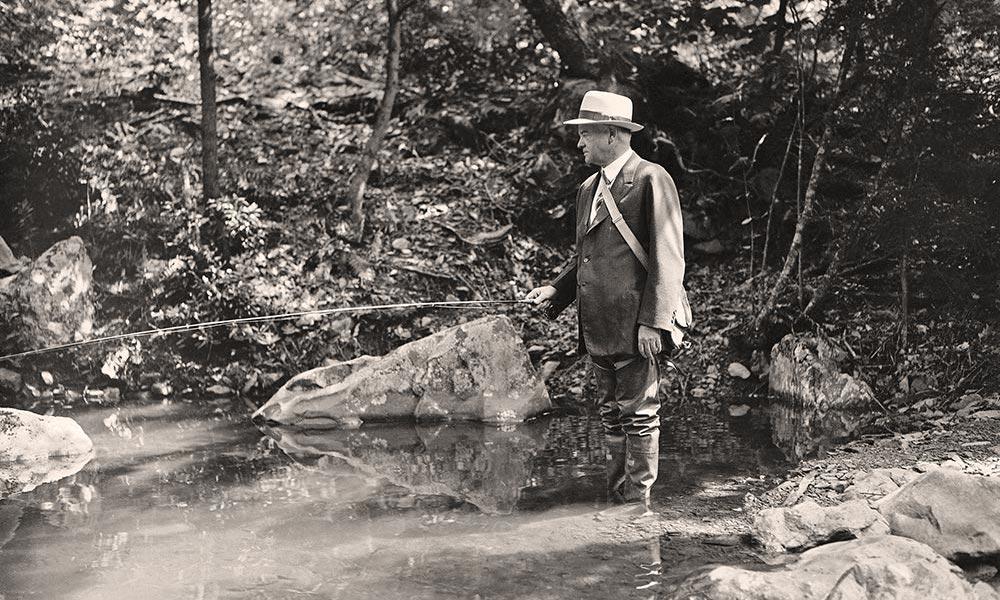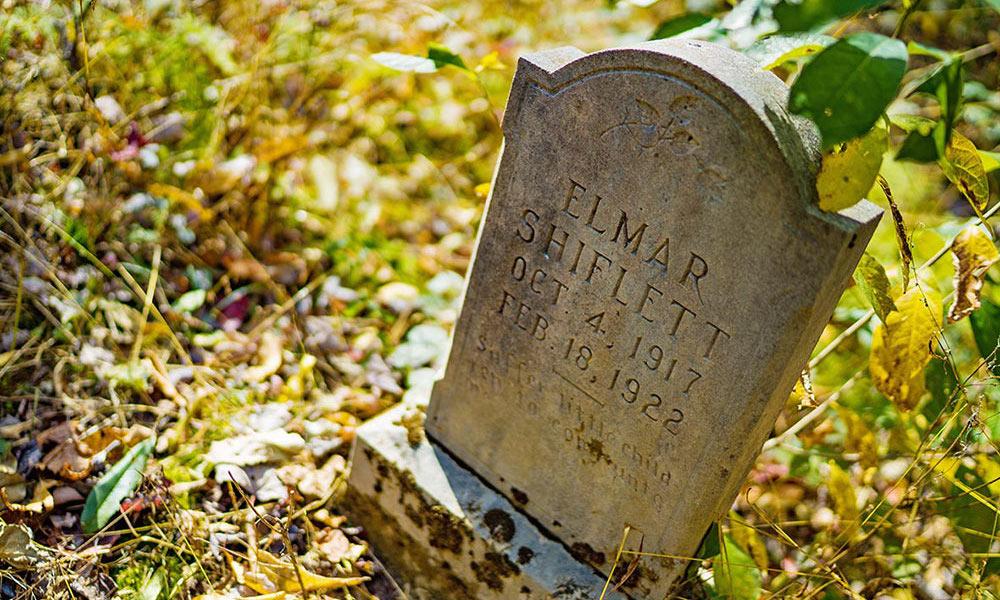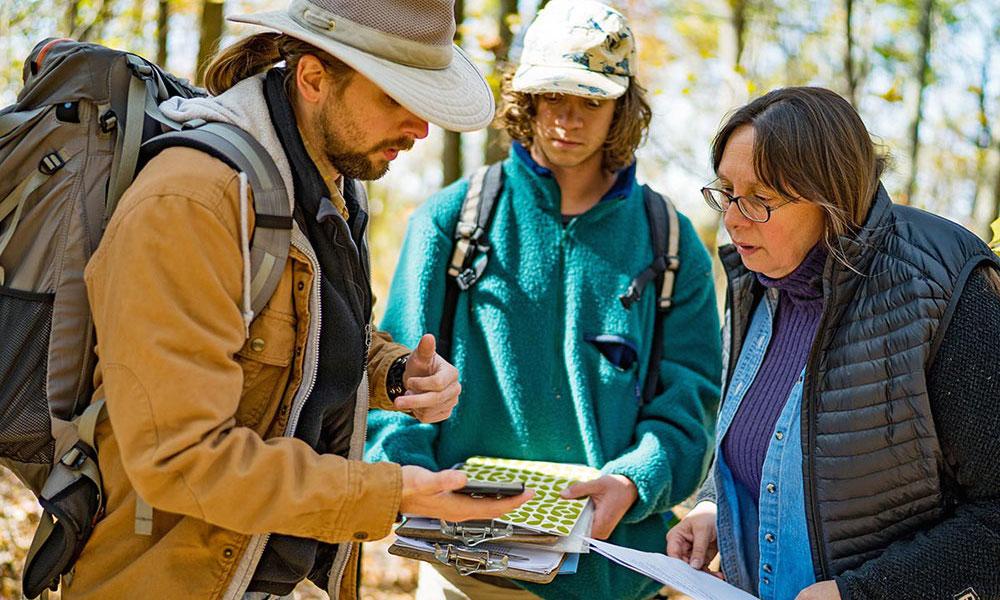Park's natural beauty belies a lost culture
Arts and Culture
SUMMARY: Part of the National Park Service that is observing its 100th anniversary, SNP offers a lens for considering the national parks' establishment, value and future.
from the November 2016 digital issue of Madison
Slowing down along the Skyline Drive, it is easy to view the majestic mountain ridges, lofty overlooks and rugged outcroppings and feel you are above the world in an untamed landscape — a true wilderness.
But the land that predates the founding of Shenandoah National Park was far from untrammeled by humans.
Before the 1916 establishment of the NPS and the transfer of Yosemite Valley in California to the new system, “the area that became Shenandoah was already known as a recreational getaway,” says Carole Nash (’83), a professor of integrated science and technology and director of the SNP Environmental Archaeology Program. Skyland, then a private retreat, dates to 1888, and a Shenandoah Valley travel organization was already established when the park system was in its infancy. A few years later, President Herbert Hoover was enjoying his rustic retreat, Rapidan Camp.

|
“This is a really interesting time in American history.” Nash says. “After the Civil War and Reconstruction, the economy had finally been re-established and an urban middle class was emerging. The automobile was introduced and all of a sudden there is a kind of mobility that had never been experienced before. People who had rural roots and had moved to the city were expressing a desire on the part of the American public to have access to beautiful, natural places.”
Part of the National Park Service that is observing its 100th anniversary, SNP offers a lens for considering the national parks’ establishment, value and future.
“Early NPS administrators recognized the need for there to be parks in striking distance of heavily populated areas,” Nash says, and thus, SNP was authorized as an eastern park 80 years ago.
But in order for the public to have that access, approximately 470 families were moved out of the area designated for the new park. Other forced movements occurred to establish other national parks, Nash says.

|
“I think as the Park Service is coming of age, one of the stories that it’s ready to tell is not, ‘Look at this beautiful, pristine wilderness that we have saved for you,’ but rather, these were all cultural places,” she says. “There were people doing things and living in these places and things had to happen to them for this park to be established. Those stories are different with every park.”
While some local residents were agreeable with leaving the mountain, many were not, Nash says. They were making their livelihoods by timbering, milling and farming. Archaeological evidence on the sites of former homesteads indicates these residents were connected to modern consumer goods of their time, refuting an early narrative that mountain people were isolated and poor.
The idea of SNP as a wilderness also discounts the fact that the land had been lived in for thousands of years. Excavate about a foot down in the soil, and evidence of Native occupation emerges. “You have to recognize the power of the human presence and you have to recognize that different cultures leave us different signatures over time,” Nash says.

|
Parks are part of our cultural heritage for their history and for what they can teach us today. As more children are raised indoors, Nash says, basic outdoor skills — compass reading, map reading, even how to dress for altitude differences — are being lost. “One of the ways the parks are relevant for us is that they reinforce how important this knowledge was for us as a country and how important it is today.”
“If you never experience the natural world beyond your neighborhood, you’re not going to truly understand what those connections mean,” Nash says. “These lands can teach us about how nature works and how human-environment interactions shape what we recognize as natural. There’s never been a time, I don’t think, when we have needed that information more.”
|
These lands can teach us about how nature works and how human-environment interactions shape what we recognize as natural. There’s never been a time, I don’t think, when we have needed that information more. — Carole Nash, ISAT professor |
People who do engage with the natural world can leave unintended traces. “In some places, Shenandoah is being loved to death,” says Nash. On some trails in Shenandoah, especially those that are easy to access, the footsteps of many visitors have widened them as hikers walk around rocks instead of over them. It seems a small encroachment, but over time the landscape changes.
Trash and vandalism, such as carvings in trees, are also threats. People are building closer to the park, sometimes compromising the viewsheds of both sides of the narrow park. The possibility of fire in and outside the park is increasing with more dead and downed trees showing the effects of climate change. “Lack of funding is the greatest threat,” Nash says, pointing to a backlog of maintenance projects many parks have left undone.
“People sacrificed for America to have its parks,” Nash says. “It’s important for us today to avoid taking them for granted.”
